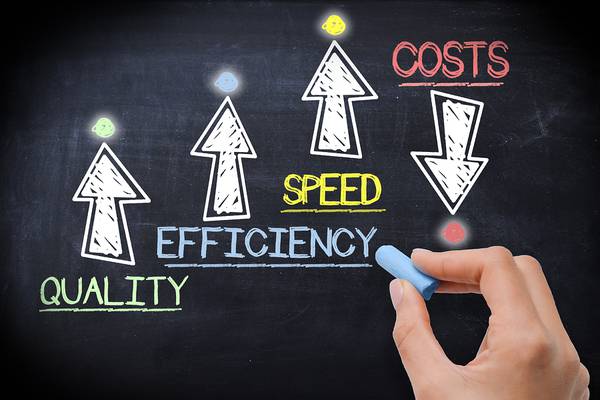Business Process Management (BPM) is a broad term that encompasses the many ways we automate and manage business processes to make them as efficient as possible.
But sometimes BPM initiatives fall short. There can be many reasons for this. Perhaps the BPM project was driven more by intuition than by hard data. Or maybe the people who operate the processes haven’t been sufficiently trained.
Sometimes BPM initiatives fail to deliver over the long term because they have been established, launched, and never revisited. BPM is a discipline and, in some organizations, requires changes to the very culture of the workplace. Like most disciplines, BPM approaches requires revisiting, refining, and relearning so that a pattern of continuous improvement emerges.
Continuous Improvement Requires Periodic Re-Evaluation
To make sure you’re getting the most from your BPM initiative, you must collect data from the processes it includes and evaluate that data on a regular basis. Have completion times kept up with expectations? Have new bottlenecks shown up? Have new people been brought in without sufficient training?
Just as you have to check the oil and tires and do regular maintenance on your car if you want it to serve you well over the years, so must you “maintain” your BPM initiatives. Otherwise they can slow down or even break down completely.
Use Data Plus Human Knowledge to Improve BPM
BPM is data driven. That means that if you expect a tweak to the process to improve efficiency and instead find out that it hinders efficiency, you must rethink the tweak and figure out why it isn’t working as expected.
Human knowledge is valuable in BPM, because people experienced in the processes that make up BPM know a thing or two. Not all of that knowledge is captured in the data collected by your BPM software. But just as you can’t solely rely on numbers, you can’t solely rely on hunches to drive BPM.
Actual humans may carry out many of the steps in a process, and there are many times when improving a process does not involve changing or upgrading technology. Improving a process could require a decidedly low-tech solution such as moving two collaborating departments physically closer together in the workspace, for example.
Your BPM Software Should Have Your Back
The right BPM software makes all the difference. In addition to being flexible, scalable, and powerful, it should allow you to collect the data necessary to make meaningful decisions about how to continuously improve processes. It should include data such as completion times (collected from process beginning and ending times), rates of production, and return on investment. And it should do so without your team having to manually enter metrics.
Likewise, your BPM software should have strong reporting features that allow you to take the data your processes collect, manage it, and make reports that deliver insights into what works well and where there is room for improvement.
PerfectApps powers business processes using a no-code interface. It is flexible, powerful, and scalable so that businesses can create processes that are custom tailored for their needs. PerfectApps also makes it easy to gather data from processes so you can evaluate them and engage in continuous improvement. Finally, PerfectApps has outstanding reporting capabilities that turn data into actionable insights. Data across multiple workflows can be summarized in a single report, giving you full visibility into how your processes work.
Watch the PerfectApps demo video to see how it transforms clunky, inefficient manual processes into sleek, automated workflows that capture data and facilitate continuous improvement. And if you have any questions about PerfectApps, we encourage you to contact us at any time.






